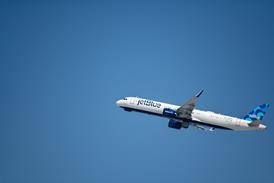Single-frequency surveillance system overcomes FAA objections with emphasis on high performance at lower cost
Raytheon is proposing a single-frequency datalink rather than the dual-frequency arrangement favoured by the Federal Aviation Administration as it bids to become the owner and operator of the USA's next-generation air traffic surveillance system.
However, given the FAA's desire to minimise costs through innovative ideas, Raytheon remains very much a suitor in the competition that will take place this spring. "The FAA accepted our technical proposal and invited Raytheon to continue in the acquisition process," says the company.
Raytheon is one of three contractors selected by the FAA last month to bid for a $1 billion-plus, 15-year contract to design, install and operate an automatic dependent surveillance - broadcast (ADS-B) system in the USA.
The two other companies vying for the contract are Lockheed Martin and ITT, neither of which has been willing to share the technical details of its proposal. The FAA plans to release a request for offer by the end of March and award the contract in July.
The company's key innovation is to eliminate the 978 MHz Universal Access Transceiver (UAT) from its architecture, keeping only the 1090 MHz "Mode ES" transponder. In 2002 the FAA decided that high-altitude aircraft should use Mode ES, while low-flying aircraft, primarily the general aviation fleet, should use the UAT. Benefits of UAT include a high-bandwidth link capable of carrying weather, traffic and other flight information along with the position and speed information of the surrounding traffic.
Eric Rolfe, Raytheon's ADS-B programme director, says the dual-solution has its drawbacks. For UAT and 1090 MHz aircraft to receive each others' traffic reports, high reliability ground-based rebroadcast systems are needed, adding cost, complexity and potential security implications related to system integrity.
Instead, Raytheon is proposing the use of Mode ES transponders for exchanging surveillance information, and is partnering XM Satellite Radio for bringing weather information into the cockpit.
The Czech Republic's new integrated air traffic control centre in Jenec, near Prague is now fully operational and incorporates Era's multilateration surveillance system and ADS-B system as part of the secondary surveillance coverage around Prague.
Source: Flight International























